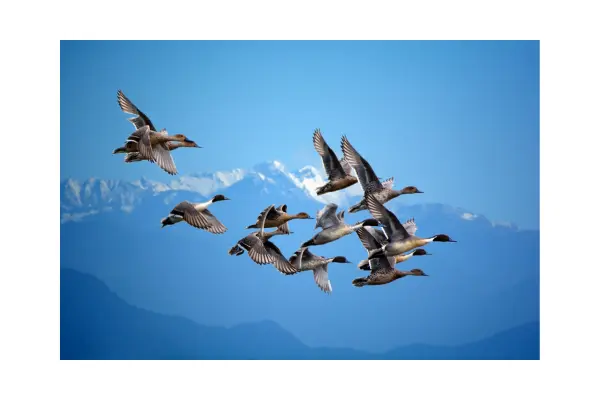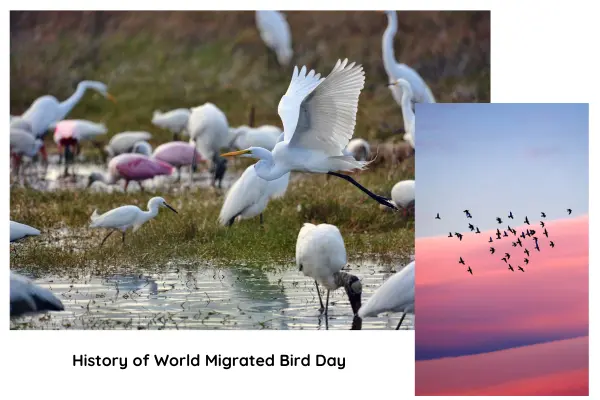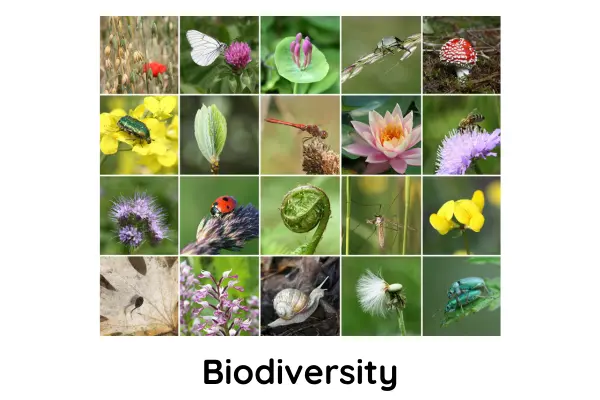Why You Should Care About World Migratory Bird Day: The Role of Birds in Ecosystem Health
Updated: 31 Jan 2025
89

Every year, World Migratory Bird Day unites people across the globe to raise awareness about the incredible journeys of migratory birds and the urgent need for their protection. Celebrated on the second Saturday of both 10 May and October, this day serves as a reminder of the challenges faced by these birds, from habitat loss to climate change, and the collective responsibility we share in preserving their natural habitats. Through educational programs, birdwatching events, and community initiatives, World Migratory Bird Day calls for action to safeguard these remarkable creatures and ensure their survival for generations to come.
World Migratory Bird Day: A Global Call for Bird Conservation
World Migratory Bird Day (WMBD) is a periodic awareness-raising campaign pressing the need for the conservation of migrant birds and their territory. It has a global outreach and is an effective tool to help raise global awareness of the pitfalls faced by migrant birds, their ecological significance, and the need for international cooperation to conserve them.
Events and Activities Worldwide

Every time people around the world take conduct and organize public events similar as raspberry carnivals, education programs, exhibitions and raspberry-watching excursions to celebrate WMBD. All these conditioning can also be accepted at any time on the time because that countries or regions observing the peak of migrations at different times, but the main days for the international fests on the alternate Saturday in May and in October.
Fostering Conservation Through Sustainable Practices
The World Migratory Bird Day crusade in 2025 will stress the need for proactive conservation measures. This includes reducing the use of pesticides and diseases, and where possible, switching to organic farming. Other measures include maintaining and connecting areas of natural foliage which give food and sanctum for birds and other species, in agricultural geographies. During their migration, birds actively seek out insects in fields, forests, washes, and colorful territory during layovers. The timing of bird migration frequently coincides with peak insect abundance at layover locales, supplying aliment for birds to replenish their energy reserves before continuing their peregrinations.
Raising Awareness and Inspiring Global Conservation Action

World Migratory Bird Day is observed twice a time during the alternate Saturday in May and again on the second Saturday in October. The thing is to raise awareness of issues affecting migrant birds and to inspire action around the world to take measures for their conservation. This day end to raised awareness about the significance of migrated birds and the need for their discussion. Each time, there is a theme that focuses on different aspects of migrated birds and their exchanges. conditioning may include educational programs, birdwatching events, and community enterprise aim to guarding bird territories.
History of World Migrated Bird Day

Since 1993, the Environment for the Americas coordinates the bi-yearly observances of World Migratory Bird Day. Dozens of associations finance events including the U.S. Fish & Wildlife Service. This day has its root in the need to raise awareness about the discussion of migrant birds and their territories. This day was first celebrated in 2006, initiated by the union nation terrain program and the agreement of the discussion of Africans-Eurasian Migrated Waterbirds (AEWA).
Over the year, the festivity has grown, with various association and communities sharing in conditioning similar as bird watching events, educational program, and niche restoration design. Each time, a specific content chosen to concentrate on different aspects of migrant bird discussion, pressing the grueling they face and the significance of guarding their migrant routes.
The idea behind this day is to punctuate the incredible trip that migrant bird takeover and the colorful pitfalls they face during these migrations. The day aim to engage the public, governments, and the association in discussion sweats for these birds and their niche.
Why Migrated Birds Need Protection
Migration is a dangerous trip and involves a wide range of pitfalls, often caused by mortal conditioning. Climate change, niche loss, and plastic pollution are just a many of the diverse pitfalls that birds face. As migratory birds depend on a range of spots along their distribution area, the loss of wintering and layover spots could have a dramatic impact on the birds’ chances of survival. Fly long distances involves crossing numerous borders between countries with differing environmental politics, legislation and conservation measures. Thus, international cooperation among governments, NGOs and other stakeholders is needed along the entire flyway of a species in order to share knowledge and coordinate conservation sweats. The legal frame and coordinating instruments necessary for similar cooperation are handed by multilateral environmental agreement such as CMS and AEWA. There are some reasons to protect them:

- Biodiversity: Migrated birds contributed in overall biodiversity of ecosystem. They help in pollination, seed disbandment and maintaining the balance of colorful species within their niche.
- Threat of survival: Migrated birds face numerous pitfalls, including niche loss, climate change, stalking and pollination. Protecting them ensures their survival and the durability of their migrant patterns.
- Economic Benefit: Birdwatching and eco-tourism centered around migratory birds can give significant economic benefits to local communities. guarding their territories can promote tourism and produce jobs.
- Cultural Significance: Numerous societies around the world have deep connection to migratory birds, often featuring them in myth, art and traditions. guarding these bird helps preserve cultural heritage.
- Climate Regulation: Birds play a role in regulating ecosystems, which can help alleviate the impacts of climate change. Their feeding niche can influence vegetation patterns, which in turn affect carbon storehouse.
- Ecosystem Health: These birds are pointers of terrain health. Their presence or absence can gesture change I the ecosystem, similar as niche declination or climate change goods. Guarding them helps maintain the health of ecosystem.
Conclusion
Guarding migrant birds is essential for ecological balance, artistic heritage, profitable benefits and the overall health of our earth. It is important to know the role of species and their environment. By promoting these days we can ensure that future generation will enjoy the beauty and benefits of migratory day.
What is World Migratory Bird Day?
World Migratory Bird Day is an international event celebrated twice a year, on the second Saturday in May and October. It raises awareness about the challenges faced by migratory birds and promotes conservation efforts to protect their habitats.
Why is World Migratory Bird Day important?
This day emphasizes the ecological significance of migratory birds, highlights the threats they face, and encourages global action to conserve their habitats. Migratory birds play a crucial role in biodiversity, pollination, and pest control, making their protection essential for a healthy environment.
When is World Migratory Bird Day observed?
World Migratory Bird Day is observed twice a year: once on the second Saturday in May and again on the second Saturday in October. These dates align with key migration periods for many bird species.
How can I participate in World Migratory Bird Day?
You can participate by attending or organizing local events such as birdwatching, educational programs, and community initiatives focused on protecting migratory bird habitats. You can also spread awareness through social media or support conservation organizations working to protect migratory birds.
What is the theme of World Migratory Bird Day?
Each year, World Migratory Bird Day has a different theme that focuses on specific challenges or aspects of migratory birds’ lives. The theme often highlights issues such as habitat loss, climate change, or the importance of migratory bird conservation in agriculture and ecosystems.
Please Write Your Comments